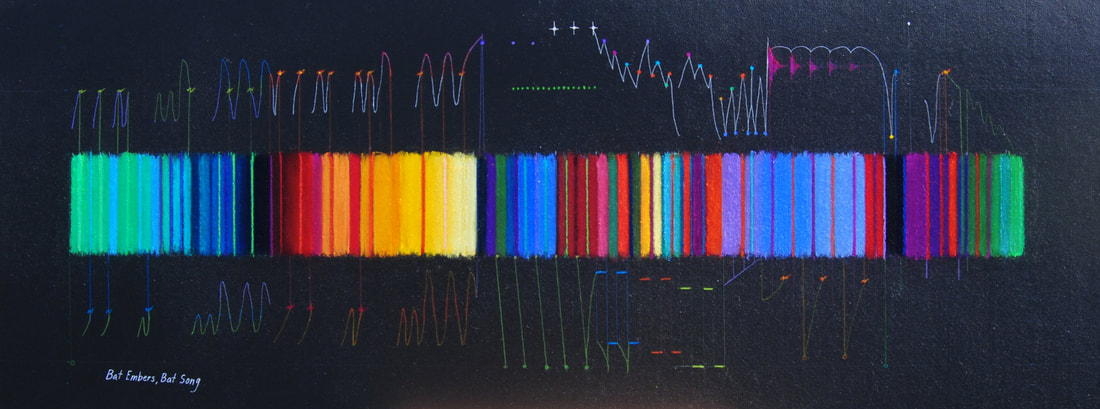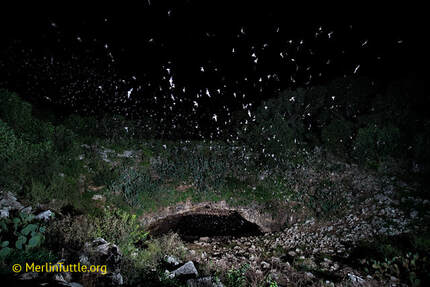Bat Embers, Bat Song
The largest bat colony in the world lives in Bracken Cave Preserve in south central Texas. Every night, 20 million bats exit the mouth of Bracken Cave together, in a spectacular horde. The next morning, however, they return individually in a constant stream. Bat Conservation International has filmed a thermal image of their re-entry. The collective heat of their bodies shows up as bright yellow, and the cooler outside air is blue-green. As individual bats return, they swirl in gracefully like embers hovering above red fire.
The journal Science published a study which indicates that just like birds, bats also sing.
Recently, researchers have discovered that the tunes of some bats are even more complex and similar to bird song than first suspected. These bats' melodies are structured, have multiple syllables, phrases, repeated patterns, and, of course, rhythm. Their songs also have syntax, meaning rules for how the phrases can be combined.
Science AAAS
Bat Embers, Bat Song is based on the harmonic structure of a keyboard work by Jean-Philippe Rameau, a French composer in the 18th century. In the drawing, marks above and below the central colored pattern reflect shapes created by bat sonograms and spectrograms, arranged by height to trace the melodic contours and harmony of Rameau's composition, Le Rappel des Oiseaux, or Bird Song.
Banner - Creative Commons - Bat spectrogram cropped from original by Jennifer Krauel

